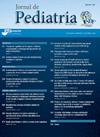智利学童的心肺功能和社会经济影响:一项横断面研究。
IF 2.8
4区 医学
Q1 PEDIATRICS
引用次数: 0
摘要
摘要比较智利在校学生的心血管风险和体能状况:共有 7218 名学生参加,他们完成了国家教育质量测量系统的所有国家测试,其中包括体能和人体测量测试。测试结果根据教育机构类型和人体测量指标进行比较。体能通过下肢力量、腹部力量、上肢力量、躯干柔韧性、用力心率和心肺功能进行测量。分析了体重指数、心率和腰围与身高的比例,作为预测心血管风险的指标:结果:不同类型的机构在预测心血管风险方面存在差异(P < 0.05)。在所评估的体能测试中也发现了差异(P < 0.01)。与公立学校(PS)和委托管理学校(DA)相比,私立学校(PSC)和补助学校(SC)的学生心血管风险水平较低,体能水平较高:总之,与公立学校的学生相比,社会经济水平较高的教育机构的学生心血管风险较低,身体素质较好。作者建议考虑采取特定的学校干预措施,以降低心血管风险并提高这一弱势群体的体能。为此,今后的研究应分析学校体育活动和营养习惯的特点,以确定影响结果的因素。本文章由计算机程序翻译,如有差异,请以英文原文为准。
Cardiorespiratory fitness and socioeconomic influences in Chilean schoolchildren: a cross-sectional study
Objective
To compare the cardiovascular risk and physical fitness, according to type of school in a national sample of Chilean school students.
Methods
A total of 7,218 students participated, who completed all the national tests of the National System for Measuring the Quality of Education, which included physical fitness and anthropometric tests. The results were compared according to the type of educational establishment and anthropometric indicators were considered. Physical fitness was measured by lower extremity strength, abdominal strength, upper extremity strength, trunk flexibility, exertional heart rate, and cardiorespiratory fitness. Body mass index, heart rate, and waist-to-height ratio were analyzed as predictors of cardiovascular risk.
Results
There were differences according to the type of establishment in the predictors of cardiovascular risk (p < 0.05). Differences were also found in the physical fitness tests evaluated (p < 0.01). Students in private schools (PSC) and subsidized schools (SC) had lower levels of cardiovascular risk and higher levels of physical fitness than public schools (PS) and schools with delegated administration (DA).
Conclusions
In conclusion, students in educational establishments with a higher socioeconomic level have lower levels of cardiovascular risk and better physical fitness than students in public establishments. The authors suggest considering specific school interventions to mitigate cardiovascular risk and improve physical fitness among this vulnerable population. To this end, future studies should analyze the characteristics of physical activity and nutritional habits in schools to determine the factors that affect the results.
求助全文
通过发布文献求助,成功后即可免费获取论文全文。
去求助
来源期刊

Jornal de pediatria
医学-小儿科
CiteScore
5.60
自引率
3.00%
发文量
93
审稿时长
43 days
期刊介绍:
Jornal de Pediatria is a bimonthly publication of the Brazilian Society of Pediatrics (Sociedade Brasileira de Pediatria, SBP). It has been published without interruption since 1934. Jornal de Pediatria publishes original articles and review articles covering various areas in the field of pediatrics. By publishing relevant scientific contributions, Jornal de Pediatria aims at improving the standards of pediatrics and of the healthcare provided for children and adolescents in general, as well to foster debate about health.
 求助内容:
求助内容: 应助结果提醒方式:
应助结果提醒方式:


